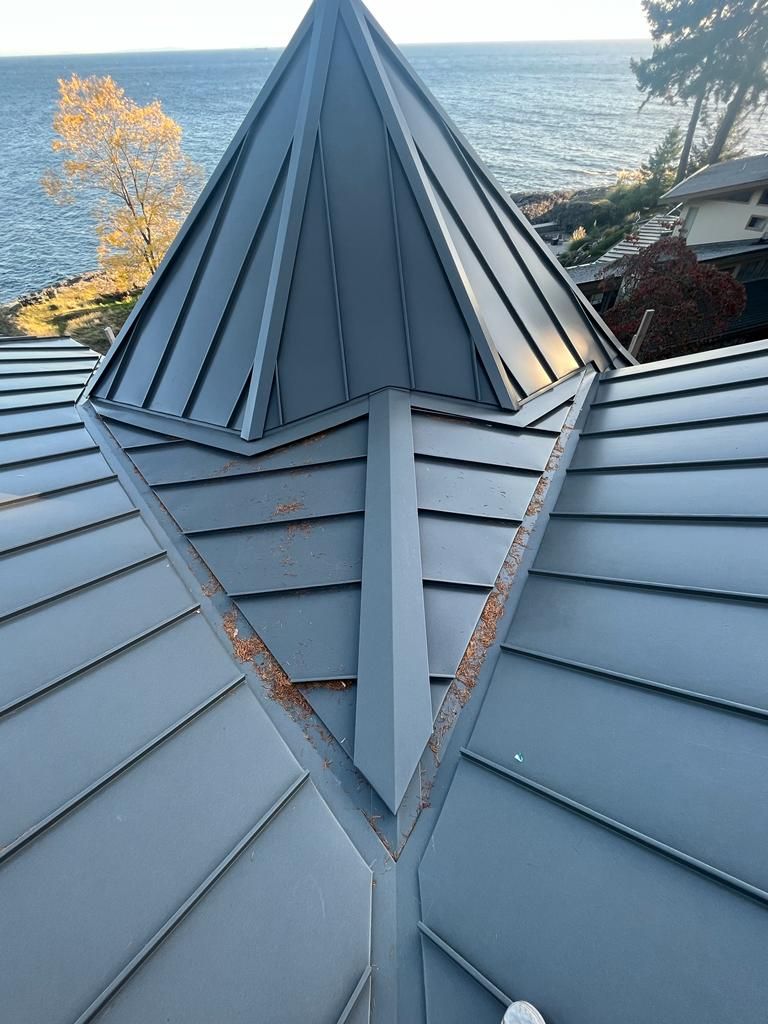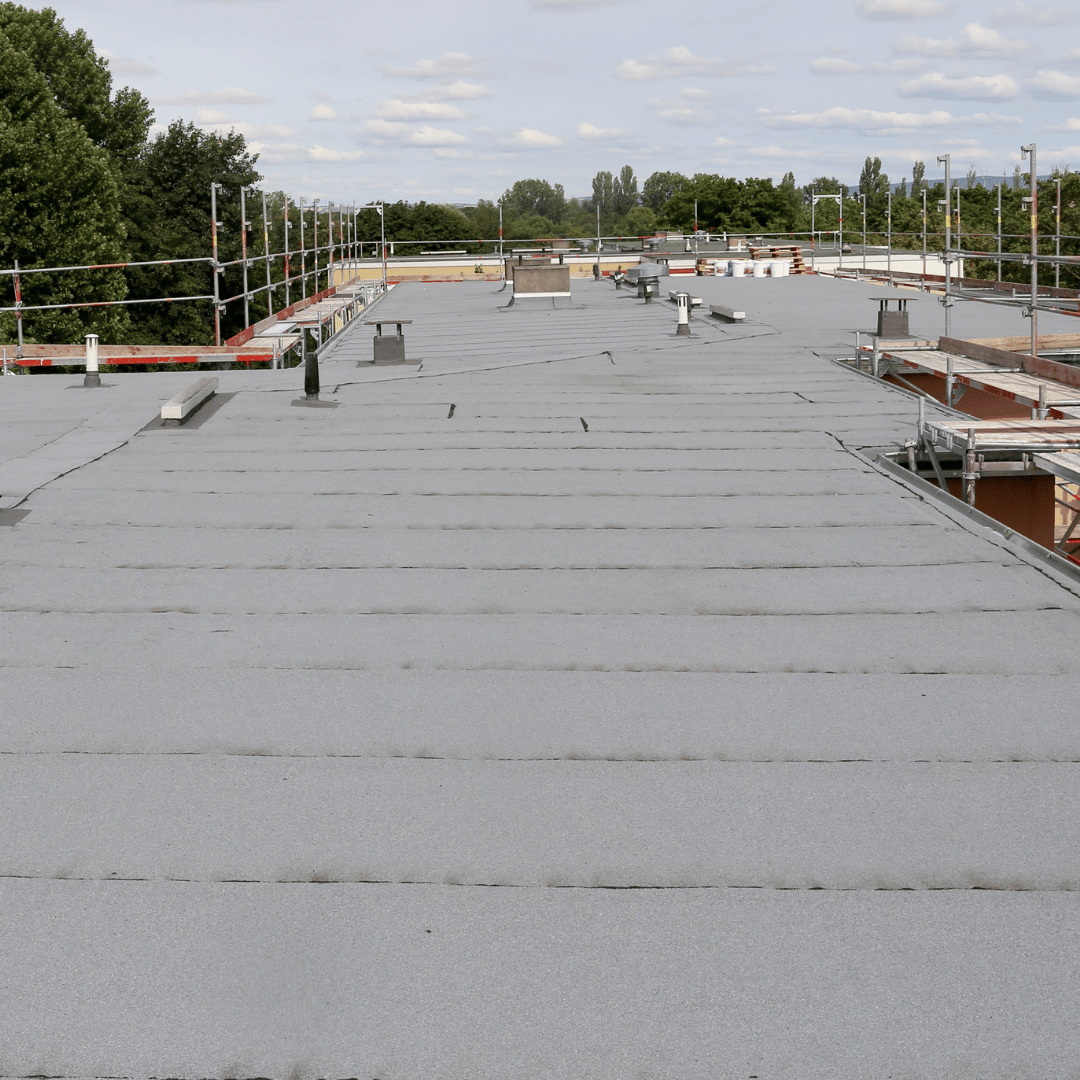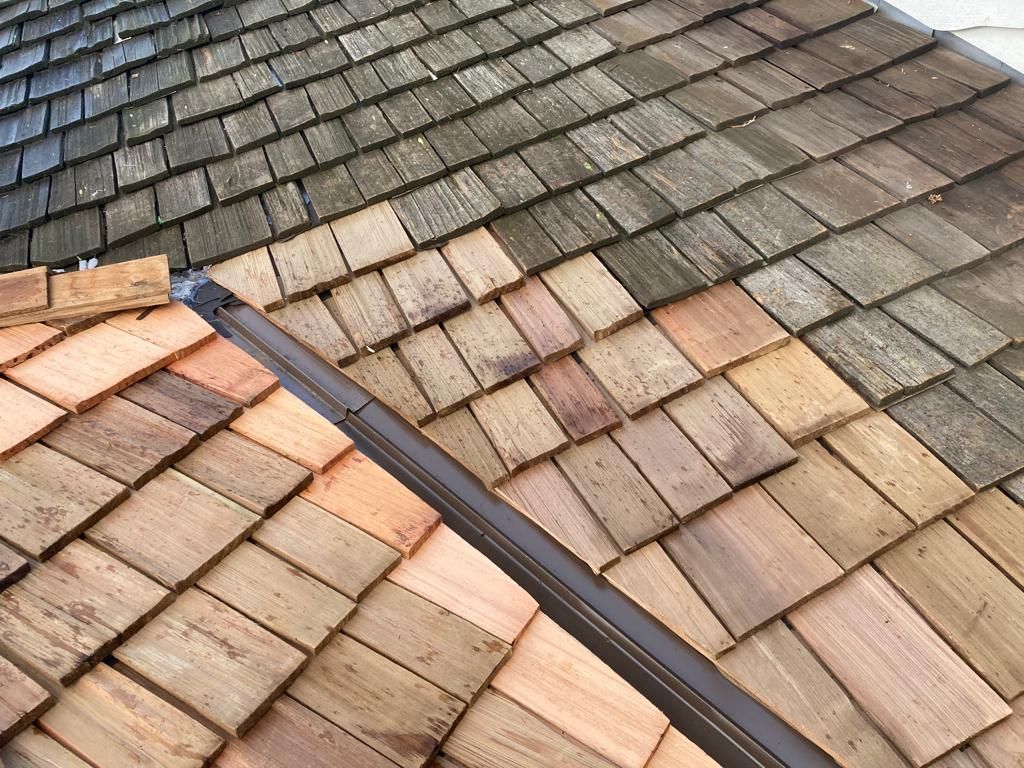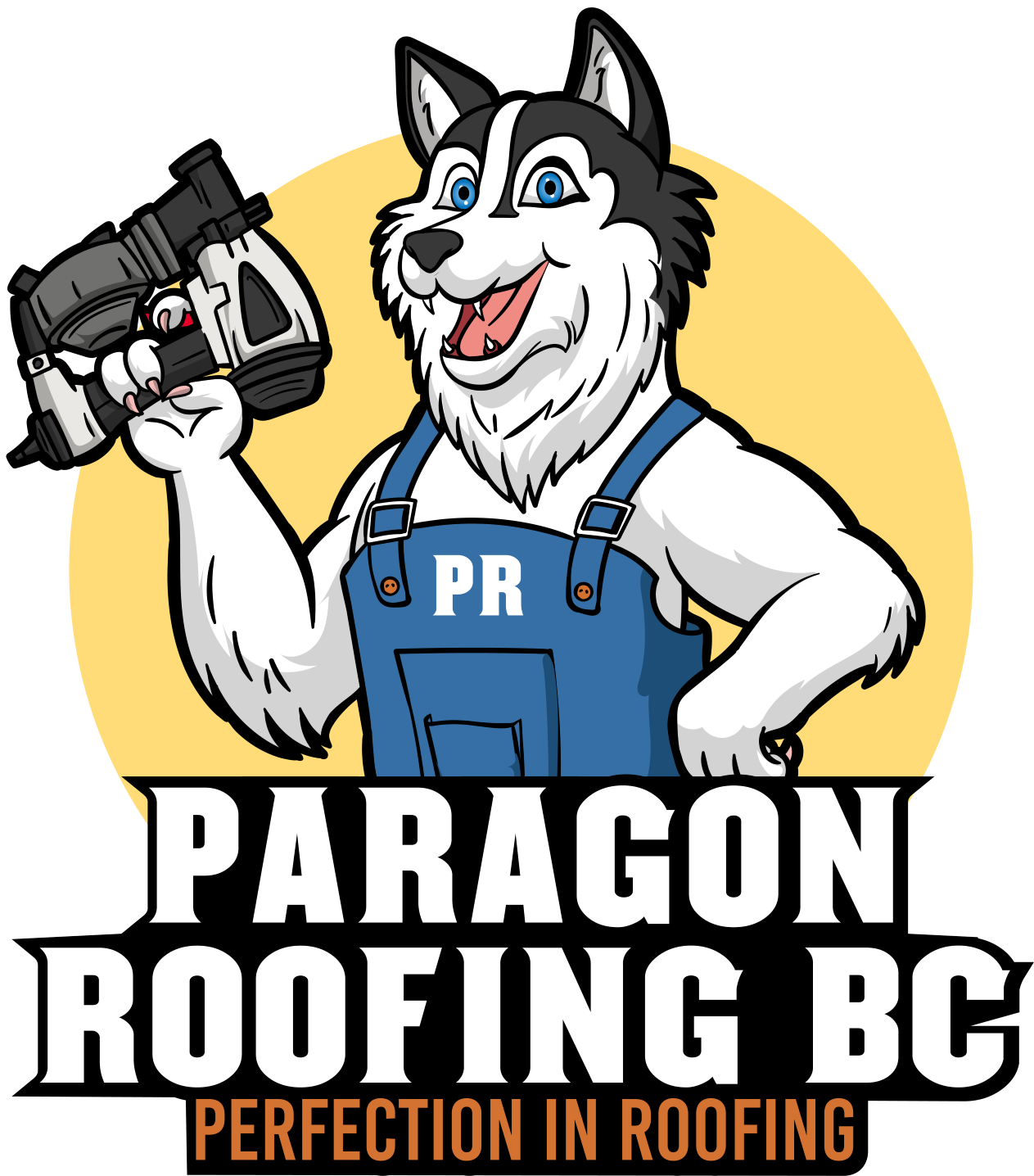Call Today
12233 92 Avenue, Surrey, British Columbia V3V 7R9, Canada
Reach Out
CALL US TODAY · 604-358-3436
Commerical Roofing in Vancouver
A Solid commercial roof isn’t just overhead—it’s your building’s first line of defense against Vancouver’s unpredictable weather, and choosing the right materials, contractor, and maintenance plan can mean the difference between decades of peace of mind or costly, stress-filled repairs post
Commercial Roofing in Vancouver
If you own or manage a commercial property in Vancouver, your roof is one of those things you probably don’t think about until there’s a problem. And trust me, when there’s a problem—whether it’s a leak over your expensive office equipment or a rooftop garden that suddenly turns into a rooftop pond—it becomes all you think about.
So, let’s dive into commercial roofing in a way that makes sense. No sales talk, no jargon—just honest, helpful info that’ll save you time, money, and unnecessary stress.
Commercial Roofing Trends in Vancouver
Vancouver has this thing where it can’t decide what kind of climate it wants to be. One minute, it’s dumping rain as we live in the Amazon. Next, it’s cold enough to make you second-guess if you accidentally moved to Alberta overnight. Then—just when you think you’ve figured it out—boom, it’s suddenly California for two weeks in August. And because the weather here plays every role in the book, commercial roofing has had to keep up.
So, what’s actually happening in roofing that’s worth paying attention to? Here’s the rundown.
Cool Roof Coatings
This one? Absolute game-changer. Imagine stepping onto your roof mid-summer and not feeling like you’re about to melt through your boots. That’s what cool roof coatings do—they reflect sunlight instead of absorbing it. It’s like upgrading from a black car to a white one in the middle of a heatwave. Same roof, way less heat buildup.
And yeah, if you’ve ever walked barefoot on asphalt in July, you know exactly what I’m talking about. Your roof used to feel like that, radiating heat into your building all day. Now? Imagine it being more like a lovely, shaded patio instead. Big difference.
The best part is the energy savings. Less heat getting in means your AC isn’t running a marathon just to keep up, which means your hydro bill isn’t quietly plotting your financial downfall every month. Buildings that use cool roof coatings can see a drop in cooling costs, which adds up fast when running a business.
Oh, and do you have maintenance guys up there? They’ll love you for this. Nobody enjoys working on a rooftop that feels like a frying pan.
Green Roofs & Rooftop Gardens
Now, this one feels very Vancouver. People here love sustainability—just look at how fast we went from plastic bags to reusable ones, even though half of us still forget them in the car every time. Green roofs are the next step in that mindset.
But this isn’t just about adding some plants for Instagram vibes. A well-done green roof actually works for you. It acts as insulation, meaning you stay warmer in winter and cooler in summer. It absorbs rainwater, so you don’t have as much runoff overwhelming the city’s drainage systems. And it protects your roofing materials from UV damage, which means your roof lasts longer.
And if you’ve got a flat roof just sitting there doing nothing? Why not turn it into something useful? Some buildings go all-in with full rooftop gardens—trees, benches, and even little outdoor workspaces. Imagine grabbing lunch and heading up to a rooftop park instead of sitting inside staring at the microwave timer. That’s a much better way to use space.
Duro-Last & TPO Roofing
Torch-on? Tar-and-gravel? Yeah, they’ve been around forever and do the job, but they also come with their fair share of headaches.
Enter Duro-Last and TPO roofing—newer systems that make life much easier.
These are lightweight, energy-efficient, and practically waterproof. You’reYou won’t have to deal with bubbling, cracking, or the constant babysitting that comes with older materials.
What makes them so good for Vancouver? Well, between the relentless rain trying to infiltrate every corner of your roof and the occasional heatwave pushing things to the limit, you need something that can handle both. These materials expand and contract with temperature shifts without falling apart. That means fewer leaks, fewer emergency repairs, and less stress overall.
And they don’t absorb much heat either, so your building isn’t constantly fighting against itself to stay calm. If you’ve ever walked into a top-floor office that felt significantly hotter than the rest of the building, you know exactly what I’m talking about.
Solar-Ready Roofs
BC Hydro rates are what they are. And what they are is not getting any cheaper. More businesses are starting to plan for solar, even without installing panels. Future-proofing your solar roof is like getting a house with a basement suite—you might not need it today, but you’ll be happy it’s there when you do.
A solar-ready roof means ensuring the structure can support panels, ensuring enough open space to install them, and getting the wiring prepped so you’re not tearing things up later. It’s the difference between setting up for success before you need it or trying to retrofit everything when you’re already behind.
And let’s be honest—if your roof is due for a replacement anyway, it makes sense to think ahead. You don’t have to go full solar right now, but setting things up so it’s easy down the road? That’s just thoughtful planning.
Should You Care About These Trends?
Maybe. If your roof is still solid, you don’t need to worry about it. But if you’re already considering a replacement, upgrading to something that can handle Vancouver’s mood swings is worth considering.
Not every building needs every new technology, and you definitely don’t need to chase trends just for the sake of it. The goal isn’t to have the most incredible roof—it’s to have the one that makes sense for your building, budget, and long-term plans.
At the end of the day, a good roof should do three things: keep the weather out, last a long time, and not make you regret your choices five years later. If any of these trends help with that, they’re worth looking into.
Choosing a Commercial Roofing Contractor in Vancouver
Alright, let’s talk about this because I see people make the same mistake over and over. They chase the lowest bid like a Black Friday deal on TVs. And I get it—nobody wants to spend more than they must. But here’s the thing: a dirt-cheap roofing job almost always means something’s getting cut. Either they’re using bargain-bin materials, rushing the work, or—worst case—just slapping a patch on the problem instead of fixing it properly. And when that roof starts leaking in three years? That’s on you to deal with, not them.
A commercial roof isn’t just a “thing” you put on top of a building. It’s a long-term investment that’s supposed to protect your property, tenants, equipment, and business. It’s not like replacing a lightbulb where, in the worst case, you just swap it out again. If your roof fails, it can mean significant repairs, business interruptions, and, in some cases, a full tear-off years earlier than expected.
That’s why choosing the right contractor isn’t about finding the cheapest option—it’s about ensuring the job is done right the first time.
So, how do you actually choose the right roofing contractor? Let’s break it down.
Experience with Commercial Roofs
This one sounds like a no-brainer, but you’d be shocked at how many “roofers” out there mainly do residential work and then take on commercial jobs just because they want the contract. Not the same thing. A commercial roof is a different beast. The materials and installation methods differ, and the stakes are way higher. If a shingle on a house is installed wrong, you get a minor leak. If a flat roof membrane is done poorly? You might be dealing with major structural issues, mold, or thousands of dollars in damages.
So ask them: How many commercial projects have you done? What kind of roofing systems do you specialize in? Have you worked on buildings similar to mine? If they hesitate, dodge the question, or only have a few examples from years ago, that’s a red flag. You want a team that does this daily, not someone using your building as their “learning experience.”
Strong Portfolio and References
Anybody can say they’re good. Anybody can throw up a nice website with fancy photos. But you want proof. Ask them for references—actual businesses they’ve worked with. And don’t just take the contractor’s word for it. Call those past clients and ask how the roof is holding up. Did they have any issues? How did the company handle it? Would they hire them again?
And if they don’t have any references? Or they give you some weak excuse like, “Oh, we don’t keep track of that”? Run. Roofing is one of those things where people remember who did their roof—especially if it went wrong.
Local Knowledge Matters
Vancouver, Burnaby, Surrey, Delta, Coquitlam—each area has quirks. Different weather patterns, different building codes, and even different roofing challenges. Have you ever tried explaining to someone from Toronto why roofs here take such a beating from all the rain? They don’t get it. But a good local contractor does.
Surrey? Some parts are notorious for moisture issues, so ventilation is key. Burnaby? You’ve got older buildings where you might have to deal with layers of previous roofing before you can even start fresh. Richmond? Low elevation and high exposure to salt air are different considerations altogether.
If your contractor is just giving you the same generic pitch they give everyone else, they’re not really thinking about your specific building. And that’s a problem.
A Warranty That Actually Means Something
A warranty is only as good as the company standing behind it. If they promise you a 20-year warranty, but they’ve only been in business for five years, how do you know they’ll still be around to honor it? I’ve seen way too many fly-by-night roofing companies pop up, do a few jobs, and disappear as soon as problems start showing up. Suddenly, that “15-year warranty” is worthless because there’s no one left to call.
What are the best roofing companies? They stand by their work, not just with a piece of paper, but with actual service. If something goes wrong, they fix it. They don’t dodge your calls, make excuses, or just handle it. And if they’ve been around for decades, that tells you something: they’re not going anywhere.
You want a contractor who will be there for the long haul. Someone who cares about their work, not just cashing the cheque and moving on. Because a commercial roof isn’t something you should think about for a long time. If it’s done right, you won’t even notice it—no leaks, no problems, just quiet, reliable protection year after year.
So yeah, take your time choosing. Ask the hard questions. Do the research. Because the right choice now means fewer headaches (and fewer repair bills) down the road.
And if you ever need straight-up, no-BS advice about your roof, call someone who’s been doing this for years—not the cheapest guy on Craigslist.
Alright, let’s get honest about commercial roofing. This isn’t some cookie-cutter decision—what works for one building could be a disaster for another. A strip mall in Surrey isn’t dealing with the same issues as a high-rise in downtown Vancouver, and a mechanic shop in Delta sure doesn’t have the exact needs as a fancy hotel in Burnaby. That’s why I want to break this down in a way that helps you, no marketing fluff, no pressure, just real talk so you don’t regret your choice five years down the road.
TPO & PVC Roofing – The Tesla of Flat Roofs
Let’s start with the golden boys of modern roofing. If you want something energy-efficient, durable, and relatively easy to maintain, TPO (Thermoplastic Olefin) and PVC (Polyvinyl Chloride) are solid options.
TPO is the newer kid on the block. It's lightweight, highly reflective (so it doesn’t trap heat like a black roof), and resistant to UV, chemicals, and general wear and tear. It’s great for big-box stores, warehouses, and even office buildings that want to keep cooling costs down.
On the other hand, PVC has been around longer and has a bit more street cred. It’s similar to TPO in many ways but better at handling grease and chemicals, which is why you’ll see it in restaurants or industrial buildings. It’s also more flexible, handling movement and temperature changes slightly better.
Brands to look at are Carlisle, Firestone, GAF, and Johns Manville.
What you need to know before choosing TPO or PVC:
Installation makes or breaks these roofs. If your roofer rushes the job, doesn’t weld the seams properly, or skips over the details, you’ll have leaks faster than you can say “warranty claim.”
Find someone who actually knows what they’re doing.
Warranties vary greatly. Some manufacturers offer 15-year warranties, while others push 25-30 years. The key detail is that they only honor them if the installation is done to their standards.
Wind can be a factor. If you’re in a high-wind area, like somewhere exposed along the Fraser River, ensure it’s thoroughly adhered or mechanically fastened correctly. Otherwise, you’ll have a flying roof panel if you have one bad storm.
Torch-On Roofing – Tough as Nails (But Needs a Steady Hand)
Torch-on is still king for many of Vancouver’s low-slope roofs, and for a good reason—it’s durable, waterproof, and can take a beating. It can last 20-30 years without much fuss if installed right.
The process involves heating modified bitumen (basically, asphalt with rubberized properties) and rolling it onto the roof, layer by layer. It’s like building a bulletproof shield over your building.
But here’s the catch: This stuff involves an open flame during installation. One wrong move, and you’re dealing with a fire hazard. We’ve all seen those stories of buildings catching fire because some crew got sloppy with the torch. If you’re going with this, ensure your roofing contractor follows strict safety protocols.
Weight can also be an issue. If your building wasn’t designed to hold a heavier roof, piling on multiple layers of torch-on could cause structural strain over time.
Brands worth checking out are IKO, Soprema, CertainTeed, and GAF.
EPDM (Rubber Roofing) – Simple, Durable, but Can Get Hot
EPDM is the no-nonsense workhorse of commercial roofing. It’s literally just a big sheet of synthetic rubber. No seams (unless it’s a massive roof), no complicated layering; just roll it out, glue it down, and call it a day.
It’s especially great for buildings that expand and contract with temperature changes because it stretches instead of cracking. You’ll see this a lot on older buildings that need a roof that can flex without failing.
But the biggest downside? It’s black. Vancouver doesn’t get scorching summers like the Okanagan, but on a hot day, black rubber soaks up heat like crazy. If your insulation isn’t excellent, your cooling costs might spike. Some people add a white reflective coating to counteract this, but that’s an extra step (and cost).
Another thing to keep in mind is that it’s easy to repair but also easy to damage. If an HVAC team isn’t careful, their tools or sharp objects can puncture it, and suddenly, you’ve got a slow leak that’s a pain to track down.
Brands that make EPDM are Carlisle, Firestone, and Johns Manville.
Tar & Gravel Roofs – The Old-School Tank
These have been around forever, and if you own an older commercial building, chances are this is already up there. The concept is simple—hot tar and gravel layers create a thick, waterproof surface.
Pros:
Durable as hell. It can handle foot traffic, debris, and general wear and tear.
Great insulation. The gravel helps regulate temperature better than most single-layer roofs.
Cons:
Heavy. This stuff isn’t light, and if your building wasn’t designed for the weight, it could lead to structural issues.
Repairs are messy. You can’t just patch a small area like you can with TPO or EPDM. You must tear into the layers, replace sections, and deal with hot tar.
Leaks are a nightmare to find. Ever tried finding a single leak in a sea of gravel? It’s like looking for a lost car key in the middle of Stanley Park.
Green Roofs – If You Want to Be Extra
If you want your roof to double as a garden, a green roof is your best bet. These aren’t just for show—green roofs help regulate building temperature, absorb rainwater (a massive deal in Vancouver’s wet season), and improve air quality.
But before planting a mini-forest up there, you need to ask yourself: Can my building handle the weight? Wet soil is heavy; not every structure is built to hold thousands of pounds of dirt and plants.
People also underestimate maintenance. If you’re you.... don’t maintain the drainage system or check the waterproof membrane underneath, you’re basically inviting leaks inside your building.
That said, they do look amazing. If you’re an office building looking to stand out or want to add an eco-friendly element, this is worth considering.
How Do You Actually Pick the Right Roof?
It’s all about what your building needs. Some questions to ask:
How much foot traffic does the roof get? If it’s just sitting there, EPDM might work fine. If you always have people up there (maintenance crews, HVAC work, etc.), you need something more challenging like PVC or tar & gravel.
Do you need insulation? TPO and green roofs are great for energy efficiency, while black EPDM can trap heat.
What’s your budget? Some options are cheaper upfront but cost more in maintenance over time. Others are pricier now but give you 25+ years of durability.
And most importantly—get a roofer who knows what they’re doing. The best material in the world won’t save you from a bad install. A properly installed roof will give you decades of hassle-free protection. A bad install? You’ll deal with leaks, repairs, and warranty battles sooner than you’d like.
Clear Drains and Gutters Regularly
Vancouver rain isn’t just “rain.” It’s relentless. It doesn’t just fall—it finds things: the most minor crack, the tiniest weak spot, and before you know it, you’re dealing with a pond where your rooftop used to be. A blocked drain can turn into a full-blown flood situation real quick.
Trust me, a flooded commercial roof is a nightmare. Water gets heavy, and your roof starts aging faster than it should. If that water finds its way inside, you’re looking at interior damage, mold, and expensive repairs.
The fix? Clear your drains and gutters regularly. Even if you’re you can’t get up there yourself, have someone check. If you see water pooling on your roof when it’s not raining, that’s a red flag. Don’t wait.
Spot Small Issues Before They Become Big Ones
Ever see a tiny crack in your roof membrane and think, “Eh, it’s just a small crack—how bad could it be?” Bad. It could be awful. That little crack starts a leak that will slowly but surely make its way inside, one drop at a time.
And leaks don’t just mess up your ceiling tiles. They rot insulation, weaken the structure, and if you’re unlucky, they invite mold to the party. Once mold moves in, getting rid of it is a whole other nightmare.
So, what do you do? Look for the little things—cracks, blisters, loose seams. If you’re not sure what to look for, book an inspection. (I'm not saying that because we do inspections.
Schedule Yearly Inspections
Think of this like an oil change for your roof. Skip an oil change long enough, and suddenly, your car isn’t just making weird noises—it’s giving up on life.
Your roof is the same. You might not see problems, but that doesn’t mean they aren’t there. A professional can spot early signs of damage, suggest minor fixes, and save you from shelling out for a complete roof replacement years before you need to.
And look, I know—“Why do I need an inspection if my roof isn’t leaking?” That’s like saying you don’t need a doctor unless you’re sick. The whole point is to prevent the big problems before they happen.
Roof Installation & Warranties—What You Should Know
If your commercial roof was correctly installed, congrats! That’s half the battle won. If it wasn’t… well, let’s hope it was. The quality of installation determines how long your roof will last and how much maintenance it’ll need.
A solid commercial roof should come with a manufacturer’s warranty—typically anywhere from 10 to 30 years, depending on the material and the brand. That warranty is only valid, though, if your roof is maintained. If you neglect it, you could void your warranty without realizing it.
The big brands—IKO, CertainTeed, GAF, Carlisle—offer solid warranties but read the fine print. Some cover materials only, some cover labor, and some have specific maintenance requirements. It’s not the most thrilling read, but knowing what’s covered can save you a lot of money if something goes wrong.
Different Roofing Systems & What That Means for Maintenance
Not all commercial roofs are the same. A flat roof with TPO or EPDM needs different care than a metal or shingle roof.
TPO & PVC Roofing: These white, reflective roofs are great for energy efficiency but need to be checked for seam failures and punctures. If you see a tear, get it fixed fast.
EPDM (Rubber Roofing) is super durable, but it shrinks over time. If you see pulling at the seams, that’s call someone before it worsens.
Modified Bitumen: These roofs last a long time, but they don’t love standing water. If you’ve pools form, that’s a sign that your drainage needs work.
Metal Roofing is tough as nails (literally), but fasteners can loosen, and rust can set in if you’re not careful. Spot any rust? Treat it before it spreads.
Here are a Few More Things to Keep in Mind
Trees are not your roof’s friend. If you’ve got overhanging branches, trim them back. Leaves and debris can clog up your drains, and branches scrape against your roof in a storm? Not great.
Snow load matters. Okay, I know, Vancouver doesn’t get much snow, but it dumps when we do. Wet snow is heavy, and if your roof wasn’t built for it, you don’t want to test its limits.
Know when to call a pro. I’m all for DIY, where it makes sense, but commercial roofing isn’t the place for it. Doing a simple patch job can cost you way more in the long run.
Energy-Efficient Commercial Roofing Solutions
Vancouver has some of the highest energy costs in Canada, so if you can make your roof work for you instead of just sitting there, why wouldn’t you?
Some upgrades that actually make a difference:
- White or reflective roofing materials. Helps keep buildings cooler.
- Rooftop insulation. If your building leaks heat in the winter, you’re paying for it.
- Solar panel integration. Even if you’re not installing panels today, choosing a roof that can support them in the future is bright.
Alright, let’s talk about something no one ever wants to talk about: commercial roof maintenance. Yeah, I get it. No one wakes up and thinks, *“Ah yes, today is the day I finally clean my roof drains!”* But here’s the deal—ignore your roof long enough, and one day, you’ll call someone like me, standing knee-deep in water that shouldn’t be there, wondering where it all went wrong.
Roof maintenance isn’t glamorous, but it saves you from headaches. Let’s break it down. There is no jargon or sales pitch; it is just practical advice from someone who’s spent way too much time on rooftops in the Lower Mainland.
Roof maintenance isn’t exactly thrilling. No one’s saying, “Can’t wait to check for membrane cracks today!” But here’s the thing: a little effort now saves you much trouble later. I’ve seen too many situations where a minor fix got ignored, and six months later, someone’s standing in their office with a bucket catching drips.
It’s not about being paranoid—it’s about being smart. Your roof is like a silent workhorse, protecting your building day in and day out. It doesn’t ask for much, just a little upkeep: keep the drains clear, check for minor issues before they turn into big ones, and get a pro to look at it once a year.
.
That’s it.
Because here’s the truth—no one thinks about their roof until something goes wrong. And by then? It’s usually an expensive, urgent mess. So, take a few minutes, stay ahead of it, and your roof will keep doing its job without any surprises. Trust me, the last thing you want is a surprise that involves water dripping onto your desk.
Stay Dry Vancouver,
Harman
How do I know if my commercial roof needs replacing or just a repair?
The difference between a repair and a full replacement boils down to a few things:
Age of the roof – If your roof’s pushing past the 20-year mark, it’s like an old car—repairs start stacking up, and at some point, it’s cheaper to just get a new one.
Leaks, cracks, and bubbling – One small leak? Probably a repair. A dozen leaks spread out like a crime scene? That’s a sign of bigger failure.
Energy bills creeping up – If your building suddenly feels like a sauna in the summer or an icebox in winter, your roof might be losing efficiency.
Ponding water – Vancouver rain doesn’t mess around. If water is pooling on your flat roof and not draining within 48 hours, that’s bad news for the long run.
Mold or strange smells inside – Trust me, if you’re catching musty odors in the office, you don’t want to find out where it’s coming from. A leaking roof can let moisture sneak in, and before you know it, your drywall is hosting a mold festival.
If you’re unsure, get an inspection. And I mean a real one—not just some guy glancing up at your roof from the parking lot.
What’s the best commercial roofing system for Vancouver’s climate?
Depends on your building, budget, and how much hassle you want in the next 20 years.
TPO & PVC – Lightweight, energy-efficient, and good at handling Vancouver’s mood swings. TPO reflects heat well, which helps with cooling costs. PVC is tougher against chemicals (good for restaurants). If you want a solid, long-lasting, low-maintenance roof, this is a strong option.
Torch-On Roofing – If you’ve got a flat roof and want something time-tested, this is still a beast. Waterproof, durable, and holds up well against rain—IF installed correctly (big if). But it’s heavy, and the installation is literally done with an open flame, so you need someone who knows what they’re doing.
EPDM (Rubber Roofing) – Simple, flexible, and great for buildings that expand and contract with temperature changes. But it absorbs heat unless you get a reflective coating. If your office already feels like an oven in the summer, keep that in mind.
Tar & Gravel – Old-school, but it works. It’s tough, holds up well to foot traffic, and has great insulation properties. The downside? It’s heavy, messy to repair, and tracking down a leak in gravel is like playing hide and seek in Stanley Park at night.
Green Roofs – Love the environment? Got the budget? Want your rooftop to double as a tiny park? Then, sure. But keep in mind, these need a strong structure (wet soil is heavy) and require actual maintenance, or you’re just growing a rooftop swamp.
At the end of the day, it’s not about “best” or “worst.” It’s about what makes sense for your building.
How do I pick the right commercial roofing contractor?
Alright, this one’s important, and I’ll keep it real with you—don’t just go with the cheapest bid. A bad roofing job is like a bad tattoo: looks fine at first, but a few years down the road, you’re paying twice as much to fix it.
Here’s how to separate the pros from the “yeah, we do roofs too” guys:
Ask for commercial roofing experience, not just residential. Flat roofs, large-scale projects, and specific materials require experience. If they mainly install asphalt shingles on houses, do you really want them working on your office building?
Check their portfolio and actually call references. If they get weird about giving references, run.
Make sure they know Vancouver’s climate and roofing codes. Roofing in Surrey is different from roofing in Richmond. Local knowledge matters.
Read the warranty details. A “25-year warranty” sounds great—until you realize it only covers materials, not labor, or that it’s void if you don’t maintain it properly.
Look for longevity. If they’ve only been in business for a couple of years, who’s to say they’ll still be around when you need them to honor that warranty?
Bottom line: A good roof isn’t cheap, and a cheap roof isn’t good.
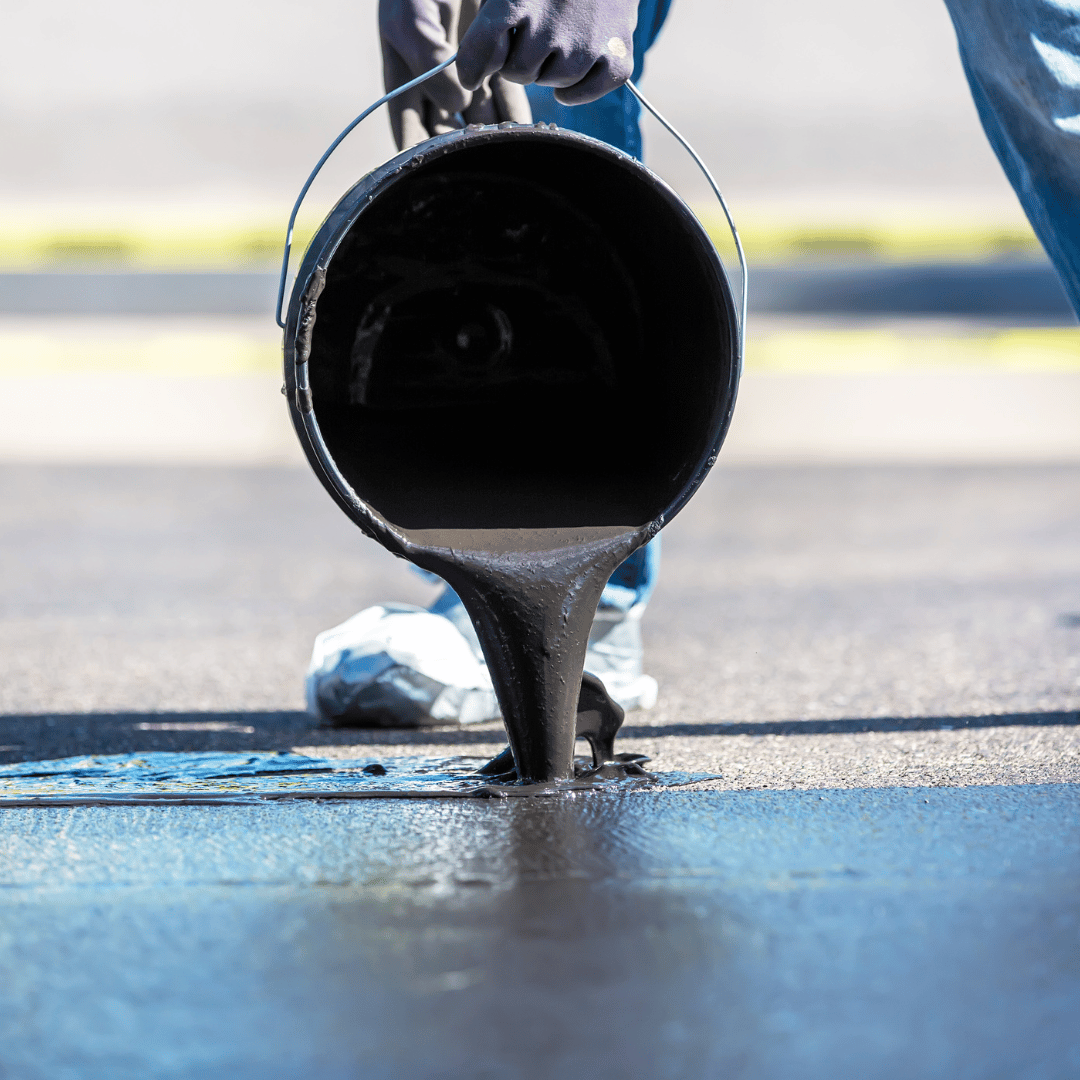
Our Roofing Blog
Have more questions about roofing?
Check out our FAQs or give us a call today to speak to an expert roofer in Vancouver Lower Mainland, BC. We're here to help our neighbours make educated decisions about their roof. For our team, we value helping clients save money while making their roofs last.
All Rights Reserved | Paragon Roofing BC | Web Design & SEO by Piiper Digital Solutions

